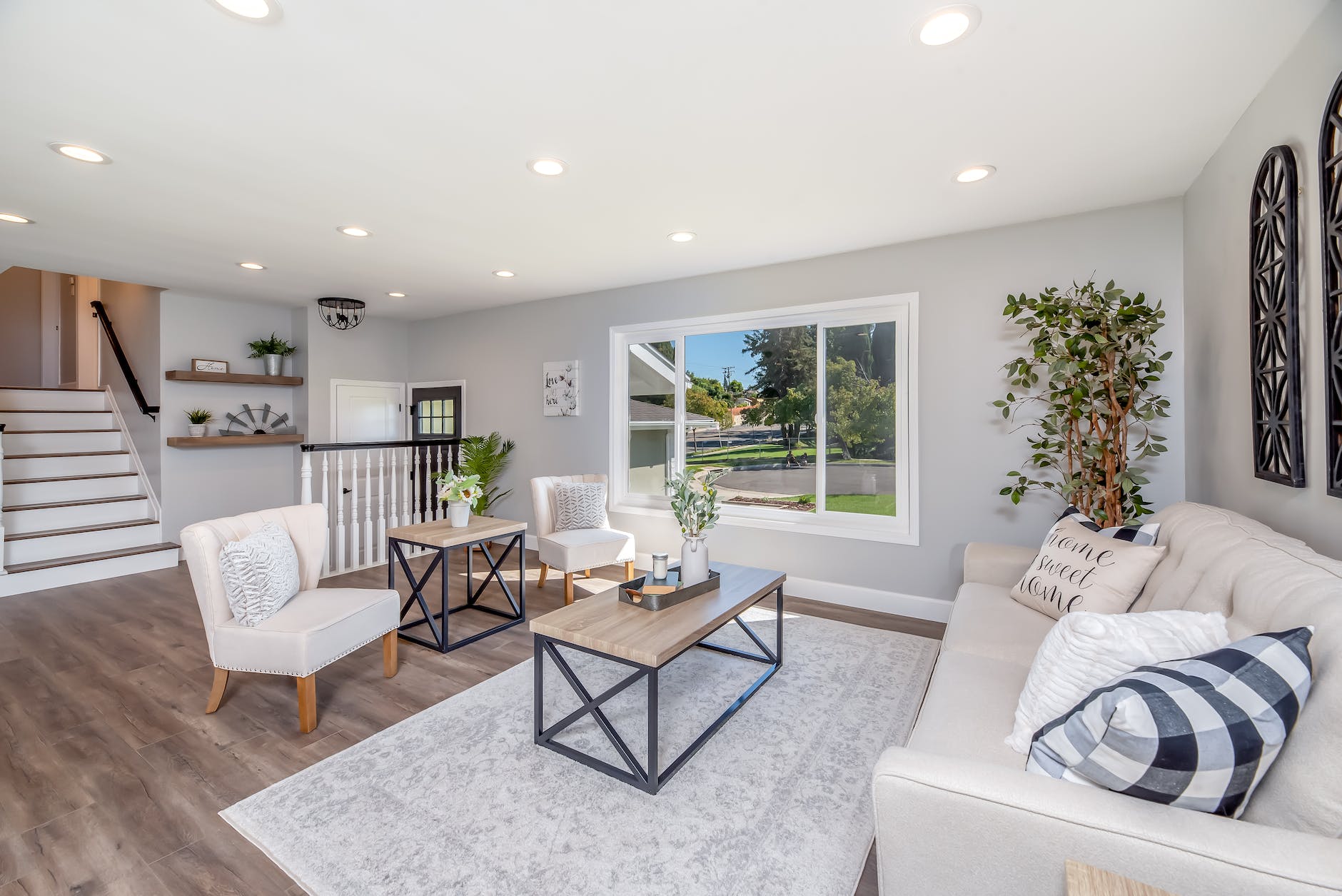A well-designed living room is the heart of a home, a space that effortlessly combines style, comfort, and functionality. It’s where we relax, entertain guests, and create cherished memories. But what are the secrets to achieving a living room that feels both welcoming and visually appealing? In this blog post, we will unveil the secrets of a well-designed living room. From furniture selection and layout to color schemes, lighting, and finishing touches, these tips will help you create a living room that reflects your personal style and enhances your everyday living experience.
I. Define Your Design Style
Before embarking on any design project, it’s essential to define your design style. Consider your preferences, lifestyle, and the overall aesthetic you want to achieve in your living room. Some popular design styles include:
- Contemporary: Characterized by clean lines, neutral colors, and minimalist furnishings, contemporary design offers a sleek and sophisticated look.
- Traditional: Classic and timeless, traditional design features elegant furniture, rich textures, and warm color palettes.
- Mid-Century Modern: Inspired by the design trends of the 1950s and 1960s, mid-century modern design showcases organic shapes, bold colors, and sleek furniture.
- Bohemian: Bohemian style embraces a relaxed and eclectic vibe, with layered textures, vibrant colors, and an assortment of patterns.
Choose a style that resonates with you and serves as a foundation for your living room design.
II. Furniture Selection and Layout
The furniture you choose and how you arrange it can significantly impact the functionality and aesthetics of your living room. Consider the following tips:
- Determine focal point: Identify a focal point in your living room, such as a fireplace, a stunning view, or a media center. Arrange your furniture to complement and highlight this focal point.
- Select appropriate seating: Choose comfortable and appropriately sized seating options for your living room. A combination of sofas, armchairs, and ottomans can accommodate both large gatherings and cozy moments.
- Consider traffic flow: Ensure there is enough space for easy movement and traffic flow in your living room. Arrange furniture in a way that allows people to navigate the room without obstruction.
- Balance proportions: Pay attention to the scale and proportion of furniture pieces. Mix larger and smaller items to create visual balance and avoid overwhelming the space.
III. Colors and Patterns
The colors and patterns you incorporate into your living room design set the tone and ambiance of the space. Consider the following ideas:
- Choose a cohesive color scheme: Select a color palette that complements your design style and creates a harmonious atmosphere. Whether you prefer neutral tones, bold hues, or a combination of both, ensure the colors work together.
- Add pops of color: Inject pops of color through throw pillows, rugs, artwork, or accent furniture. These elements can add personality and visual interest to your living room.
- Play with patterns: Incorporate patterns through textiles, such as curtains, rugs, or upholstery. Mix and match patterns to add depth and texture, but ensure they coordinate and don’t clash.
- Use wallpaper as an accent: Consider using wallpaper on a single accent wall to add visual intrigue and create a focal point in your living room.
IV. Lighting and Ambiance
Lighting plays a crucial role in setting the mood and creating ambiance in your living room. Consider these lighting tips:
- Layer lighting: Utilize a combination of ambient, task, and accent lighting to create a well-lit and versatile space. Use overhead fixtures, floor lamps, table lamps, and sconces strategically to provide different lighting levels.
- Embrace natural light: Maximize natural light by keeping window treatments minimal or using sheer curtains. Natural light not only illuminates the space but also brings a sense of openness and connection with the outdoors.
- Dimmers and adjustable lighting: Install dimmer switches to control the intensity of lighting in your living room. This allows you to adjust the ambiance according to different activities and moods.
- Highlight focal points: Use accent lighting, such as spotlights or picture lights, to highlight artwork, architectural features, or decorative elements in your living room.
V. Finishing Touches
The finishing touches add character and personality to your living room. Consider these ideas:
- Decorative accessories: Incorporate decorative accessories like vases, sculptures, candles, and books to add visual interest and reflect your personal style.
- Textiles and fabrics: Use textiles and fabrics to add warmth and coziness to your living room. Consider throw blankets, cushions, curtains, and area rugs that complement your overall design.
- Greenery and plants: Bring the outdoors inside by incorporating houseplants or fresh flowers. They not only add a touch of nature but also contribute to improved air quality and a calming ambiance.
- Personal touches: Display meaningful artwork, family photos, or cherished objects that hold sentimental value. These personal touches make your living room feel uniquely yours.
Conclusion
Designing a well-crafted living room requires careful consideration of furniture selection, layout, colors, lighting, and finishing touches. By defining your design style, selecting appropriate furniture, choosing a cohesive color scheme, layering lighting, and adding personal touches, you can create a living room that is both functional and visually stunning. Embrace the secrets of a well-designed living room and transform your space into a haven where you can relax, entertain, and enjoy life’s precious moments.
